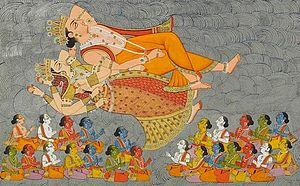Arthur, the last ‘king’ of the Britons, has been analysed,
scrutinised, mocked and praised through the ages. For a man without any
positive identity or even, perhaps, existence, this is quite an achievement.
Those who recognise the
ancient British hero as either the
mythical demi-god or the possibly real last leader to stand against the
invading English, will be familiar with the works of the past. Mallory,
Geoffrey of Monmouth and
William of Malmsbury will all be names that strike chords
of recognition, with Mallory’s
Morte D’Arthur
probably the most well-known source of speculation and romance regarding
this character from our ancient past.
In his studious and careful re-examination of known facts,
scholarly conjecture and outright fable, Saklatvala has brought together these
know sources and added many less familiar works to the canon for an in-depth
examination of the possible reality. My only criticism of his narrative stems
from his clear bias toward the positive role of Christianity in Arthur’s
background; I suspect that this leaning toward that religion has distorted some
of his judgement. However, I applaud the scholarship displayed along the way.
The book, necessarily, contains a huge number of ‘if’s; such
is the nature of conjecture. And, if nothing else, we who are not such scholars
learn a good deal about how the mind of the archaeologist functions. In the
absence of concrete evidence, speculation, informed by knowledge of times,
customs, actual historical events and other reliable sources, steps in to form
a picture of possibilities. Whether the reader believes the resultant
conclusions is dependent on that reader’s prior knowledge of the subject, his
own prejudices, and the ability of the narrator to convince him of his
theories.
I came to this topic with the average English schoolboy’s
knowledge of Arthur, informed by scant history from school lessons, the
imaginative Disney
The Sword in the Stone
movie,
Mary Stewart’s quintet of Arthurian legends, the musical
Camelot and, of course, the inimical
Monty Python and the Holy Grail. So, I imagine
I was fairly typical of the majority of people in this respect.
 |
| Monty Python and the Holy Grail (Photo credit: Wikipedia) |
What I found in these pages surprised and informed me. I came
across many names I had forgotten I knew;
Vortigern, Ambrosius,
Hengist, Horsa,
Bede and others. But I was introduced to entirely new characters both
historical and legendary; Germanus, Maximus, Gratian, Valentinian,
Nennius, Claudian
and Gildas amongst many.
Saklatvala has studied innumerable texts and put together
those facts that appear to support each other from disparate sources to form
the kernel of a possible truth about Arthur. The label, ‘King’, is clearly a
latter day title for a man who was probably known in his lifetime as the ‘Duke
of Britain’, a military leader devoted to the task of keeping alive the traditions
and values of Rome at a time when that empire was swapping military power,
which had declined to the point of non-existence, for religious power in the
role of Father of Christianity in the person of the Pope.
The reason for much that is valued in current society has
been made clearer to me by reading this book and I suggest that anyone with an
interest in
English history would be well served by reading it. It was first
published in 1967 and new evidence has come to light since then, some no doubt
inspired by the book itself. Nevertheless, the nub of the narrative remains, I
suspect, as credible now as it was when the book was written. Scholars with
specialist knowledge will no doubt already be aware of the theories and
conclusions made by this author. But those who have only a passing familiarity
with the legend that is
King Arthur will undoubtedly discover much food for thought
within these careful and comprehensive pages. Give it a try; you might be
surprised by what it tells you.













